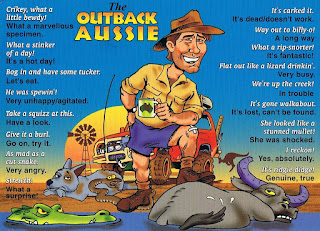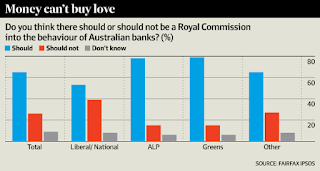How to pay off your debts ASAP
It's common knowledge that debt and financial problems are the number one cause for stress and worry in our lives.
Recently I met with "Frank and Ernest" who had amassed combined total debts of $127,000 across their credit cards, home loan and personal loans.
Frank told me that they expected to be debt free in fifteen years (based on his mortgage etc).
"How does being debt free within the next five years sound?' I asked.
A Frank and Ernest Conversation.
Frank: “You can't be debt free in 5 years or less if you own a home”.
Me: “Really, do you mind if I use you as an example?”
Frank: “This will be interesting”
Me: “Can you save 10% of your gross income?”
Frank: “If it means I will be debt free in 5 years absolutely.
The following table shows the Frank and Ernest's financial income and expenses position
Clients
|
Gross
|
Tax Approx
|
Net
|
Spend
|
Frank Income
|
$55,000
|
$10,000
|
$45,000
|
$2,400 (Fixed)
|
Ernest Income
|
$35,000
|
$4,000
|
$31,000
|
$2,000 (cash)
|
$1,900 Other exp
| ||||
Total
|
$90,000
|
$14,000
|
$76,000
| |
Per Month
|
$7,500
|
$6,300
|
$6,300
|
Frank and Ernest agree to save 10% of their gross income per month = $750 and they find this by making savings within on their current expenses etc…
Summary of Debts Held by the Client
Item Description
|
Major Debt
|
Monthly Repayments
|
Interest Rate
|
(Factor)
|
Payment Ranking
|
House
|
$100,000
|
$1,100
|
10.5%
|
90
|
5th
|
Car
|
$20,000
|
$450
|
15%
|
44
|
4th
|
Myer/Store Card
|
$2,000
|
$350
|
21%
|
5.7
|
2nd
|
Credit Card
|
$1,300
|
$300
|
19%
|
4.3
|
1st
|
Personal Loan
|
$4,500
|
$200
|
23%
|
22.5
|
3rd
|
Total
|
$127,800
|
The following is the sequence we recommended the client pay down their individual loans so to achieve the goal of being debt free in less than 5 years.
As with many things in life the simple the strategy, the easier it is to implement and the more profound its impact.
So while people get concerned and confused about the best way to pay down debts, the following is what I believe to be one of the simplest and best formula to make it a reality for you.
Starting with the debt with the least owing, pay this off and then with the interest you are now saving (by paying off the debt) add this towards paying off your next debt etc… lather, rinse, repeat until all your debts are paid off.
Debt Reduction Recommendation
Item Description
|
Repayment Progression
|
Debt Clearance
|
Time line
|
1st Credit card
|
Outstanding balance $1,300 repaid at
$1,050pm= $300 (repayment rate) + $750 savings
|
1.5 Months
|
Month 1.5
|
2nd Store Card
|
Outstanding balance $2,200 repaid at
$1,400pm =$1,050 from available savings i.e. $750 per month + $300 repayment saved as 1st Credit card paid out+ $350 (repayment rate) on store card.
|
1.5 Months
|
Month 3
|
3rd Personal Loan
|
Outstanding balance is $4,500 repaid at $1,600pm = $1,400 from available savings i.e. $750 per month + $300pm repayment saved as 1st Credit card paid out & $350pm repayment rate on the Store card + $200 personal loan monthly repayment rate.
|
3 Months
|
Month 6
|
4th Car Loan
|
Outstanding Balance $20,000 repaid at $2,050pm =$1,600 from available savings i.e. $750 per month + $300pm repayment saved as 1st Credit card paid out + $350pm repayment on the Store card + $200pm repayment personal loan rate + $450pm repayment car loan rate.
|
10 Months
|
Month 16
|
House Loan
|
Outstanding Balance $100,000 repaid at $3,150pm =$2,050 from available savings i.e. $750 per month + $300pm repayment saved as 1st Credit card paid out + $350pm repayment rate on the Store card + $200pm repayment personal loan rate + $450pm repayment car loan rate+ $1,100pm repayment home loan rate.
|
32 Months
|
Month 48
|
Some people may argue one can also achieve the same outcome by consolidating all your loans into one big loan at a lower interest rate. While this may be so in theory, the real issue is that people become more laissez-faire, thinking they can now slack off in their repayments or go out and spend more.
The human tendency is to again go out and spend on the card or on an unforeseen expense or emergency (if they don’t have an emergency expense savings account).Due to the minimum debt repayment set by the financial institution (compared to what the individual is paying as a whole now) and simply because its available, yes you guess it… it goes on to the credit card again and ultimately the borrower ends up in more debt.
By implementing the debt reduction method of one debt at a time; one’s confidence builds through reinforcement as the evidence of progress reveals itself, (releasing debt burden) one debt at a time.
Paying off debt and never owing it again is a truly liberating experience. I encourage you to embrace this approach if you are lost and confused when it comes to how to best pay out your debts.
About Peter Horsfield
Peter Horsfield in an Authorised Representative and Investsure Holdings Pty Ltd ABN 16 050 286 630 as trustee for Horsfield Family Trust ABN 55 609 068 513 is a Corporate Authorised Representative of Infocus Securities Australia Pty Ltd ABN 47 097 797 049 AFSL and Australian Credit Licence No. 236523.
This information is of a general nature only and neither represents nor is intended to be specific advice on any particular matter. Infocus Securities Australia Pty Ltd strongly suggests that no person should act specifically on the basis of the information contained herein but should seek appropriate professional advice based upon their own personal circumstances.



Comments
Post a Comment